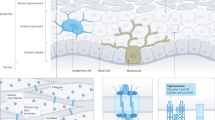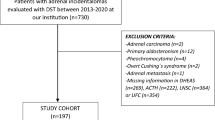Abstract
PREVIOUS investigations here and elsewhere have shown that glucocorticoid hormones as well as stress decrease the diffusibility of intradermally injected colloidal particles. Inhibition of diffusibility occurs when the colloidal material is injected both with and without hyaluronidase, ‘the spreading factor’1. Schiller and Dorfman2 reported that cortisone acetate depressed sulphate (Na2 35SO4) incorporation in chondroitin sulphate and carbon (acetatel-14C) incorporation in chrondroitin sulphate and hyaluronic acid of rat skin. On the other hand, Hayes and Baker3 reported enhanced spread of a hæmoglobin–hyaluronidase solution in the skin of rats which had been injected daily for 37 days with ‘Lipo Adrenal Extract’. Clay and Nelson4 reported depressed spread of India ink as well as indian ink–hyaluronidase solutions in the skin of rats which had been stressed as long as 4 months with elevated environmental temperatures. The authors found that a single injection of cortisone acetate5 or a short period of forced swimming6 in heat-treated rats caused a marked increase in dermal diffusibility.
Similar content being viewed by others
Article PDF
References
Opsahl, J., Yale J. Biol., 21, 255 (1949).
Schiller, S., and Dorfman, A., Endocrinol., 60, 376 (1957).
Hayes, M., and Baker, B., Endocrinol., 49, 379 (1949).
Clay, M. M., and Nelson, J., J. Amer. Pharm. Assoc. (Sci. ed.), 43, 222 (1954).
Clay, M. M., and Nelson, J., J. Amer. Pharm. Assoc., 43, 225 (1954).
Clay, M. M., and Nelson, J., J. Amer. Pharm. Assoc., 43, 228 (1954).
Schiller, S., Slover, G. A., and Dorfman, A., J. Biol. Chem., 236, 983 (1961).
Dische, Z., J. Biol. Chem., 167, 189 (1947).
Silber, R. H., Busch, R. D., and Oslapas, R., Clin. Chem., 4, 278 (1958).
Author information
Authors and Affiliations
Rights and permissions
About this article
Cite this article
FEDIAY, Z., CLAY, M. Acid Mucopolysaccharide Content of Dermal Connective Tissue of Normal and Stressed Rats. Nature 202, 907–908 (1964). https://doi.org/10.1038/202907a0
Issue date:
DOI: https://doi.org/10.1038/202907a0



